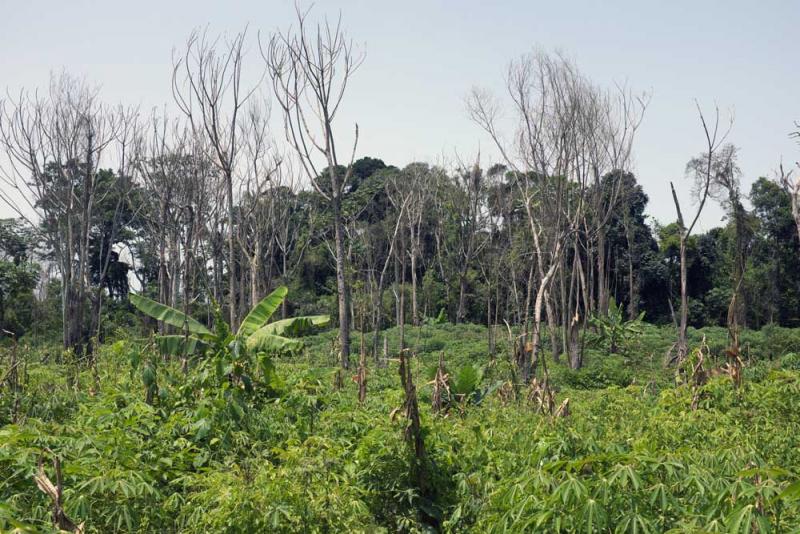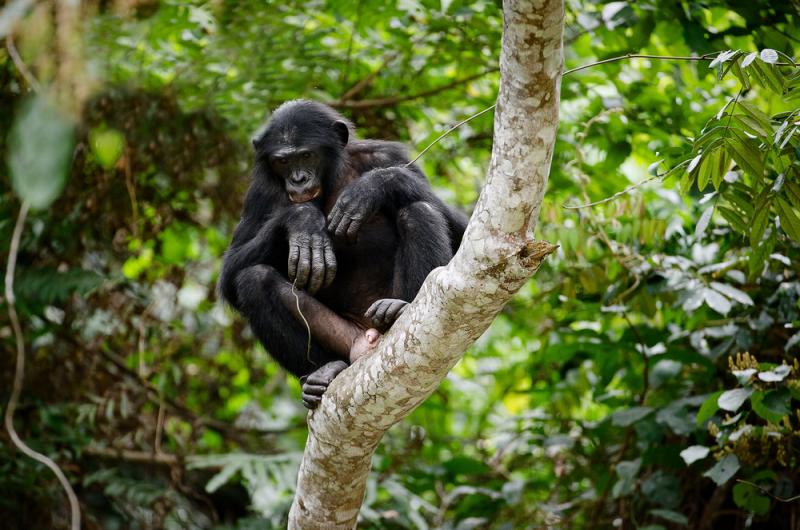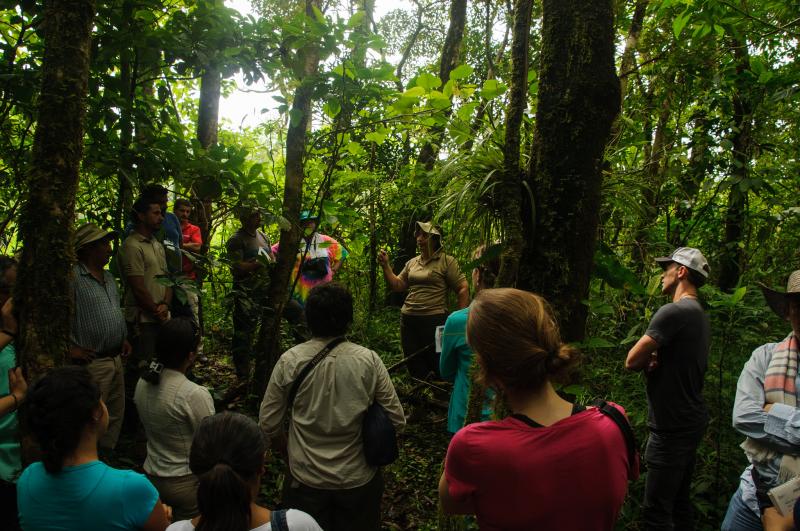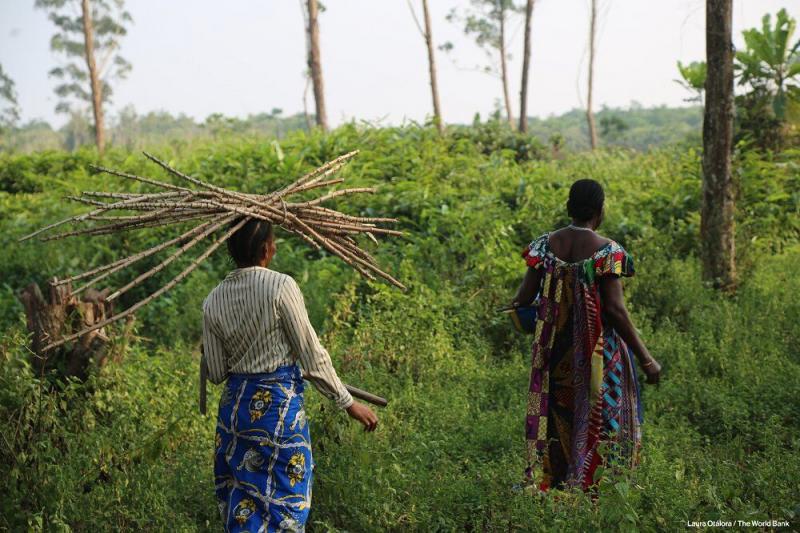Eric Marx looks at Democratic Republic of the Congo, where REDD+ projects have been criticised for failing to uphold the rights of forest communities, raising concerns about the success of the program globally
Land rights is emerging as a big issue in the UN’s REDD+ programme to reduce deforestation, with concern focused on a tract of 9.8 million forested hectares in the Mai-Ndombe province in the Democratic Republic of the Congo (DRC).

Mai-Ndombe contains an exceptionally high concentration of advanced REDD+ projects, as well as enormous amounts of tropical forest carbon. At least 20 projects are under way or planned, covering 12.3 million hectares, with an investment of more than $90m.
Under REDD, which stands for “reducing emissions from deforestation and degradation”, a company can earn carbon credits if it can generate an activity that reduces emissions or sequesters carbon – by, for example, reducing shifting slash-and-burn agriculture, energy wood production (charring) or small-scale and artisanal logging.
NGOs monitoring REDD+ projects in Mai-Ndombe say it sets a bad precedent
The “+” was added to the original REDD programme in 2010 because it added new requirements having to do with poverty alleviation, biodiversity preservation and the enhancement of ecosystem services such as clean water.
According to the UNFCCC, 39 countries, 27% of those that signed up to the Paris Agreement in 2015, said they plan to implement REDD+ projects as their main contribution to cutting greenhouse-gas emissions from land use.

But NGOs that are monitoring the existing REDD+ projects in Mai-Ndombe say it sets a bad precedent and the payments-based system will lead to “green-grabbing” by the private sector rather than boost local communities’ ability to protects forests.
They point out that in the case of the DRC, as in most of the countries that are preparing to participate in REDD+, legislation does not provide a clear structure for how the various rights to forest relate to forest carbon “ownership”, nor how overlaps would be treated in terms of income from REDD projects.
“REDD+ was created to both halt deforestation and benefit local communities – yet the current projects in Mai-Ndombe fail to address both objectives,” said Marine Gauthier, a lead author on a new report issued by the Rights and Resources Initiative (RRI), a coalition of more than 150 organisations working to advance forest tenure, policy and market reforms.
Strong indigenous and community land rights are vital prerequisites for climate finance to succeed
As such, said Gauthier, communities would not gain from the programmes' benefits, which are tied to land and resources rights, in spite of their generations of stewardship over these forests.
The report comes at a critical moment, as the countries that fund the World Bank's Forest Carbon Partnership Facility (FCPF) prepare to make a decision on a payment agreement that would insert millions of dollars into REDD+ programmes in DRC.
“If the programme in Mai-Ndombe is approved without ensuring that local peoples’ rights are respected, it would set a terrible precedent for REDD+ and make a bad situation worse,” said Alain Frechette, researcher and director of strategic analysis at RRI.

“Strong indigenous and community land rights and a clear understanding of who owns forest carbon are vital prerequisites for climate finance to succeed in its goals of reducing poverty and protecting forests.”
In its report on Mai-Ndombe, RRI alleges numerous FPIC infractions, including opaque and unrepresentative LDCs, the absence of women's participation in decision-making bodies, and a benefits-sharing mechanism that is susceptible to mismanagement by local elites.
“None of the development plans or micro-projects have any legal basis in land tenure,” the authors write. LDCs are not entities with land rights and, as such, are too weak to defend the interests of the communities, let alone conflicts resulting from increased REDD investment, land speculation and migration.
Local participatory land use planning is an integral part of the Forest Investment Program
In response to the RRI report, the World Bank pointed to its own FPIC (free, prior, and informed consent) rules, in effect in the DRC as guidance since 2014, and only recently passed into law in November 2017 by the DRC national government.
“Local participatory land use planning, including the discussion of tenure issues, is an integral part of the FIP [Forest Investment Program],” said a World Bank spokesperson.
The activities are developed and implemented on the ground by WWF, together with local land chiefs and village councils, also known as local development committees (LDCs). After consultation on activities with LDCs, the LDC, represented by the chief, can choose to sign up (with contracts typically signed between the chief and the project co-ordinator).

According to World Bank guidelines, the village land chief then grants a piece of land that is shared among participating households to create new sources of revenue. In many cases, fast-growing acacia trees are grown on these parcels of land, allowing households to produce and sell charcoal, with intercropped cassava plants yielding nutritional leaves and root vegetables that can also serve as a cash crop for sale in markets in the capital, Kinshasa.
In its 75-page report RRI targets companies including Wildlife Works Carbon (WWC), a private company that has been running a conservation concession in Mai-Ndombe since 2010. Having verified its emissions reductions in 2015, WWC now stands as the only REDD+ project in DRC with certified carbon credits ready to sell in voluntary carbon markets. That it has not found many buyers thus far is at least partly attributable to reports like the one put out by RRI, said WWC's president, Mike Korchinsky.
“Their agenda is legal tenure, and they believe legal tenure for forests has to be allocated before this programme moves forward,” said Korchinsky.
None of those who live inside the forest in our concession have to move
By Korchinsky's reckoning, WWC has complied with all the REDD+ social safeguards. The company's FPIC compliance has been independently audited on three occasions. Korchinsky says the outcome has been the construction of health care clinics and schools, as well as the enhancement of food security through diversification from cassava to tomato, eggplant, onions and bean crops.
The programmes were carried out in demonstration gardens, with community consent gained according to the World Bank LDC model, which has clan representatives entering into contracts after protracted discussions that aim to disclose all information before the projects start. Communities also receive a 2% share of proceeds, per World Bank guidelines.
“There are 50,000 people in our concession, and none of those who live inside the forest in our concession have to move,” said Korchinsky. “None of them will ever have to move. They live there.”

The situation in DRC is not unique. A second paper released by RRI, which analyzes the legal systems of 24 of the 50 developing countries preparing to participate in REDD+, found that only Brazil, Costa Rica, Ecuador, Peru and Vietnam have established national legal frameworks to regulate their trade in carbon. Of these, only Brazil, Costa Rica and Peru have also established legal definitions for carbon rights, noted report authors.
Costa Rica, which has had a Payment for Ecosystems Services Programme in place since 1996, has a forestry law that stipulates that land owners receive payments based on a management plan designed by a professional forester charged with monitoring its implementation.
Since 2002 the country has paid more than 4,400 farmers and forest owners. In the last 10 years those payments have been linked directly to greenhouse gas mitigation activity and the issuance of tradable carbon credits – with civil law provisions fully describing the legal nature of the transaction.
FPIC does not require the recognition of communities' customary land and resource rights
“The model is there for other countries to clarify these rights,” said Frechette. Countries need to institute legal frameworks establishing and regulating carbon rights. This starts with the recognition of tenure for indigenous peoples, thus allowing them to contract and receive payment directly for ecosystem services (PES) such as water provision, biodiversity protection, and general forest conservation activities.
What they shouldn't do, he added, is misconstrue largely procedural FPIC rights with more substantive tenure rights.
“FPIC does not require the recognition of communities' customary land and resource rights,” said Frechette. “Nor does it grant communities the authority to contract, and hence make decisions on the use, benefits, management and governance of a given forest or land area.”

The World Bank says land rights are integral to its projects. (Credit: Laura Otalora/The World Bank)
That there are big differences between Costa Rica and DRC goes without saying. One has a legal system on par with some western European countries; the other is a post-conflict state whose natural resources sector is commonly associated with widespread corruption.
For Mai-Ndombe, which officially became a province in 2015, 10 years after the national government first drew its boundaries, the governance challenge is huge.
DRC's Forest Code already recognizes the legal right of indigenous peoples and local communities to ownership of forest areas, and yet only a small portion of eligible claims have been recognized by the provincial government.
Should World Bank donors put the brakes on DRC REDD+ until after land rights are secured?
Meanwhile, researchers report a new phenomenon of “landless peasants” flowing into the province because of high unemployment in Kinshasa. Land conflicts are said to be on the rise just at the moment when a new crop of private companies are positioning themselves to receive REDD+ funds.
Is it “chaos” with potentially “disastrous outcomes” for indigenous and local people, as the RRI has characterized the REDD+ programmes? Should World Bank donors put the brakes on DRC REDD+ until after land rights are secured? Or is RRI being overly alarmist to try and fast-track through an unrealistic, if important, agenda?
The alternative, it would seem, could mean abandoning the country and its people.
Whatever the outcome, the contentious nature of land rights issues in implementing REDD+ looks unlikely to be resolved soon.
Eric Marx is a Berlin-based journalist covering issues ranging from green energy to sustainable sourcing, climate change and transparency. He has served as a correspondent for ClimateWire News and as an energy reporter with Montel newswire
This article is part of our in-depth briefing Land Rights. See also:
Brands ‘neglecting land rights’ as key weapon in battle to save forests
Zeroing in on community livelihoods in the palm oil industry
REDD+ FPIC DRC biodiversity Rights and Resources Initiative World Bank Forest Carbon Partnership Facility Costa Rica PES Indigenous Peoples


